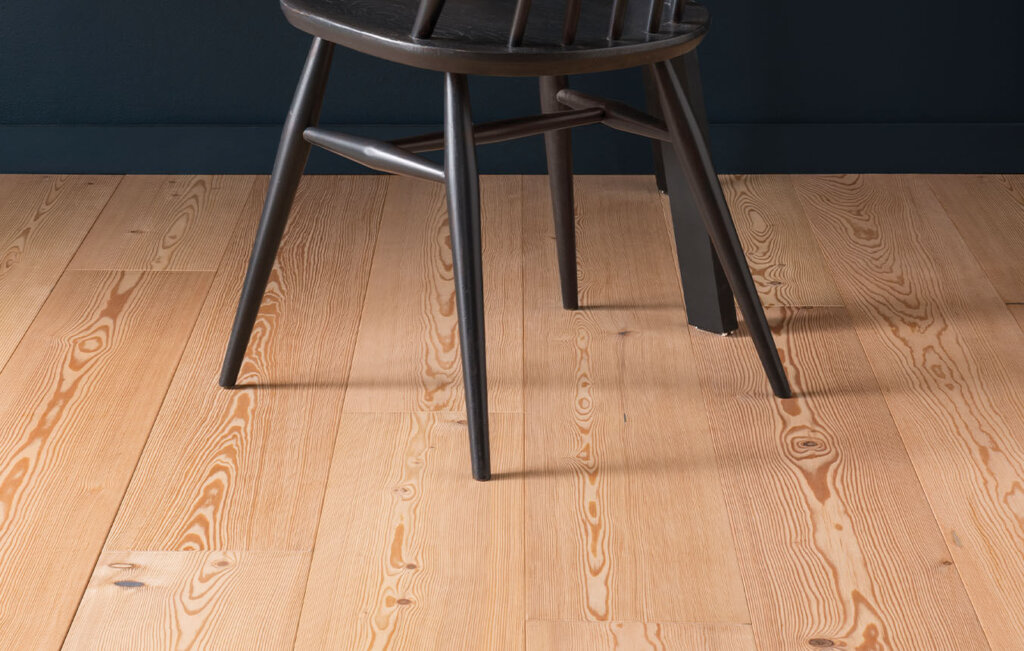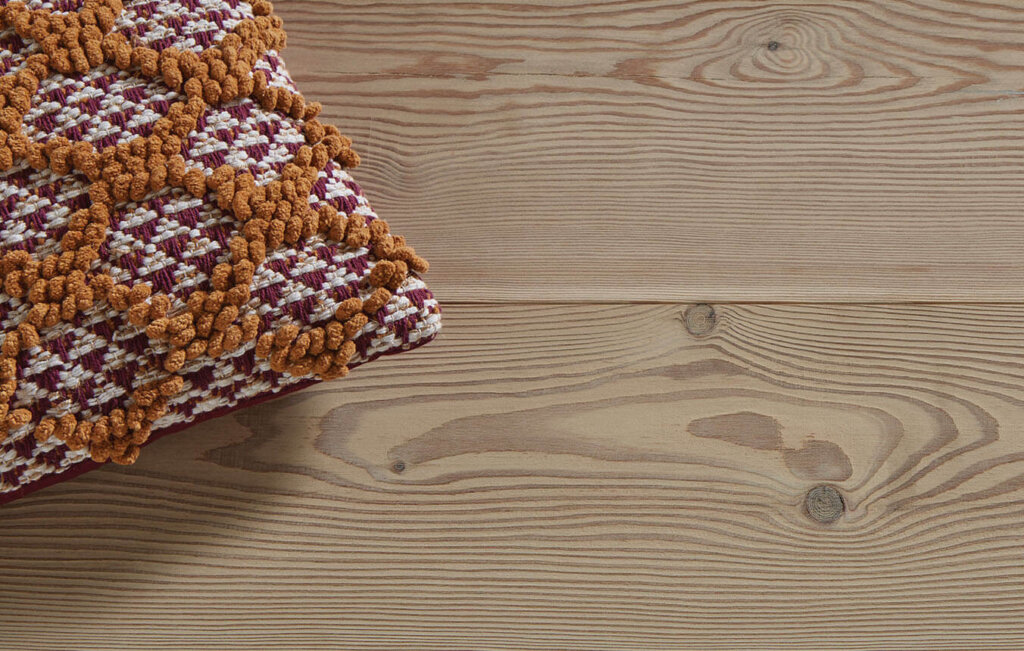European vs Siberian Larch is a question that has been asked time and time again.
Whilst they share a number of similarities, there are some key differences between the two species, with the most telling sign being the appearance.
Both larch wood species are amongst the most popular wood species within the construction and design industry. This popularity is attributed to its earthly beauty, stretching grain patterns and the ease in which you can work with the wood to create flooring, cladding and even decking.
Larch flooring explained
Siberian Larch (Larix sibirica) and European Larch (Larix decidua) trees are deciduous in their nature and can grow up to 45 metres tall. They are residents of the northern hemisphere, being more than capable of growing in harsh winters and other adverse weather conditions.
Being durable and waterproof, this wood is ideal for use as flooring – even though it is a softwood by definition, larch wood flooring is anything but, being used for housing constructions across the continent and beyond.
Aesthetically, straight grains and light warming colours define larch wood flooring and the species is often associated with the Scandinavian flooring style.

European vs Siberian Larch – the differences
The difference between European and Siberian arch is often subtle and much of it comes down to the alternative growing conditions between Siberia and the rest of Europe. There are some key elements to take note of though:
Appearance
The first thing you’ll notice about the two larch species are the alternative colours.
European or British Larch (Peteril and Rivelin for example) has a lovely pink colouring to the grain, similar to Douglas Fir pine floors, whereas Siberian larch flooring (Oster) tends to host a more yellow-to-brown tone throughout.
Being nature grade, all of these floors feature plentiful grain patterns across the plank for a relaxing natural look.
Durability
Despite strictly being a softwood, larch is deceptively strong and can last a lifetime with the correct care and attention – so much so that our larch flooring (just like every other floor species we curate) comes with a 20-year guarantee as standard.
Due to its more challenging growing conditions, Siberian Larch is somewhat tougher than its European counterpart (which includes British larch) and can even be used for external cladding and decking.
All of our larch flooring is 20mm thick, with a 4mm-6mm wear layer, meaning it can be soft sanded over the years to keep your larch flooring looking just a new as it was on installation day.
Cost
Both larch species are highly accessible and are a popular choice both in the home and commercial projects.
Siberian Larch does lean on the cheaper side of the two, but always be wary of certification when purchasing a larch flooring and assure that your flooring comes from sustainably managed forests, just like all of Ted Todd’s does.
This is important to the health of our planet and we include all certifications at no extra cost, simply because it is the right thing to do for our planet.
Availability
Our Siberian Larch floors should be readily available at all times, but our European and British larch flooring is created by hand in our Cheshire workshops by our Woodworks division.
They employ a plethora of handcrafting techniques to elevate your larch floor, bringing out the best in its colour, punctuating the edge detail and protecting the surface with a hand-applied finish for the years to come.
As such, these floors are made to order within 2-4 weeks.

Choosing the right larch flooring for you
Suitability of European Larch
European Larch is a versatile flooring choice that is suitable for all areas but is especially idea if you want to add interest your space with its unique pink colouring and natural grain.
Adding this texture and tone helps to link your project to the natural world, providing a much-needed sense of calm and relaxation.
Bedrooms, reading spaces and dining areas where the outdoor light can really help the floor stand out are some of our favourite spaces for larch wood, and the only place we would avoiding using such is in areas where you would commonly expect large water pooling.
European and British Larch is more than durable enough for kitchens and bathrooms though, just be sure to react to any water spillage quickly.
Suitability of Siberian Larch
Having more yellowy-brown colours, Siberian Larch is more likely to fit into classic designs and builds, whereby more traditional tonal options are desired. The grain is still powerfully straight and impressive, again providing the outside world link that is so desired.
You can even use all of our larch flooring as wall cladding, which can elevate every surface of your room, not just the floor beneath your feet.
Again, we’d avoid any potential spillages, but your kitchen, bedrooms, lounge areas and hallways will all feel a natural boost from using Siberian Larch flooring.
The cost of European and Siberian Larch floors
Siberian Larch and European Larch flooring is highly accessible.
Our Siberian Larch starts at £92.18 m² with Oster, from our Specialist Woods collection, whilst our European Larch starts £135.29 m² and can be found in our Woodworks division. All of our Woodworks flooring is created by hand in our Cheshire workshops, and we take extra time and care to assure every plank is perfectly proportion and finished for you.
Summary
European Larch and Siberian Larch flooring is similar in a number of different ways.
Both are durable (coming in a 20mm thickness), accessible and natural, with unique grains running throughout each and every plank.
The main difference in is origin, and as a result of the soil and conditions each of the trees grow in, tonally they stand out from one another well.
If you’d like to specify our larch flooring for your upcoming installation, be sure to get in touch with your local retail partner or our expert commercial team.
Free samples are available too, so click below to order and get up close and personal with your larch floor.